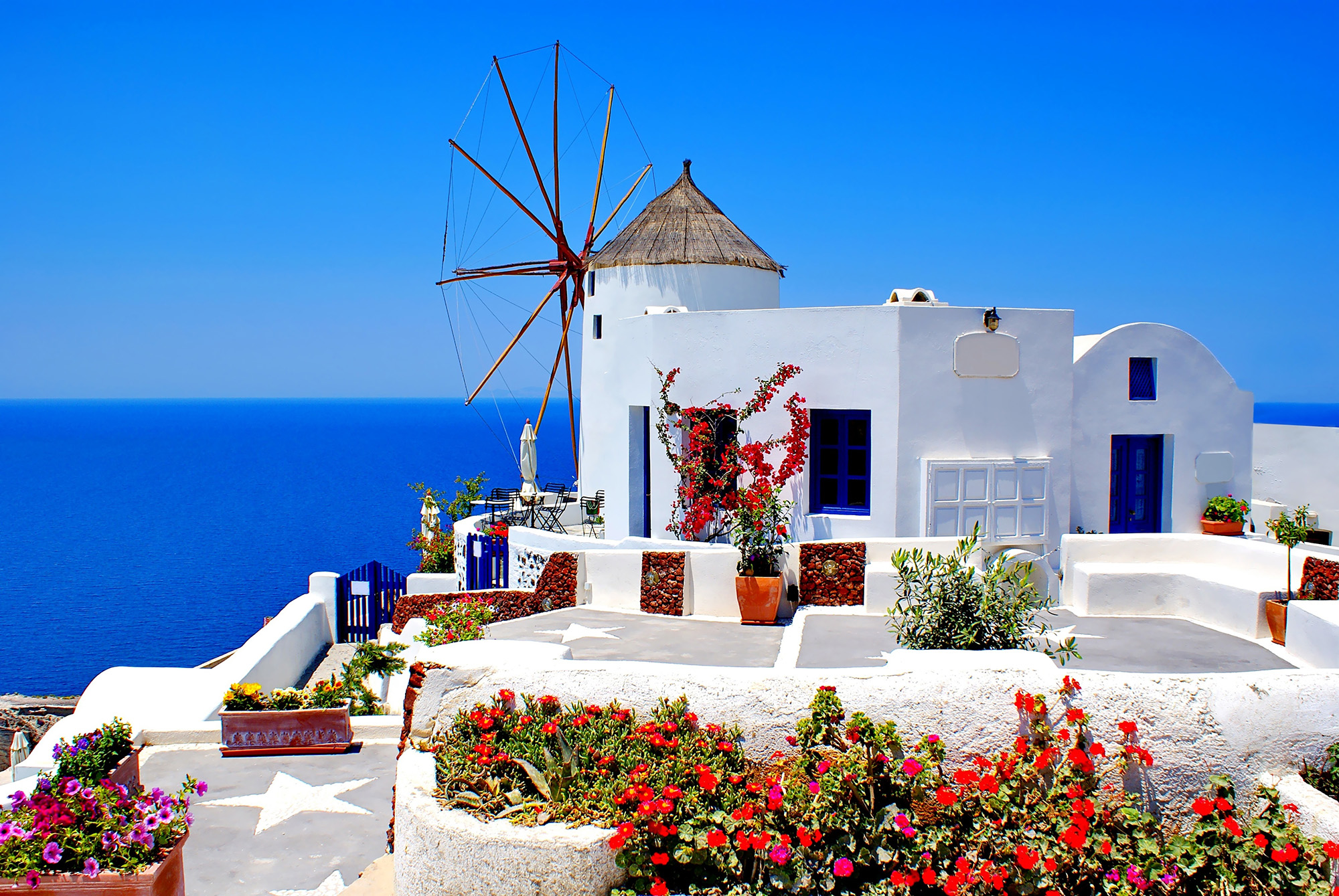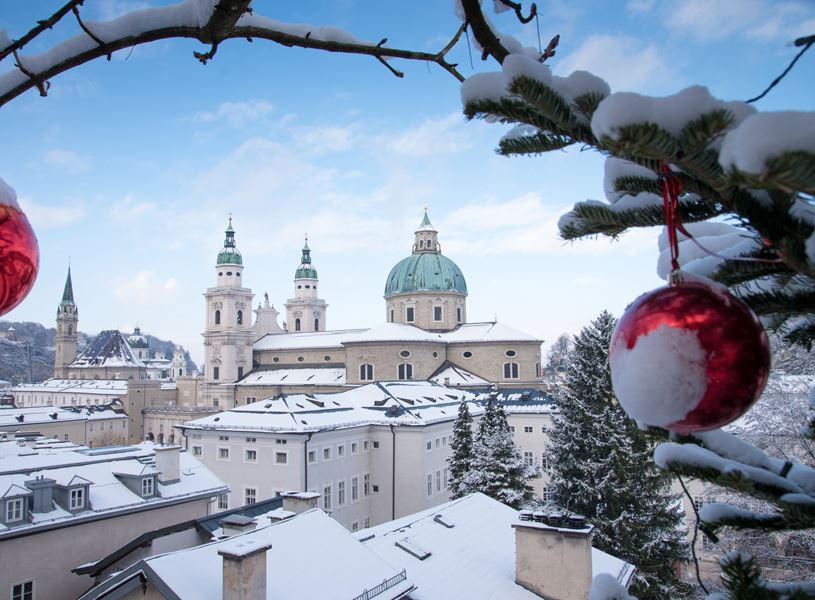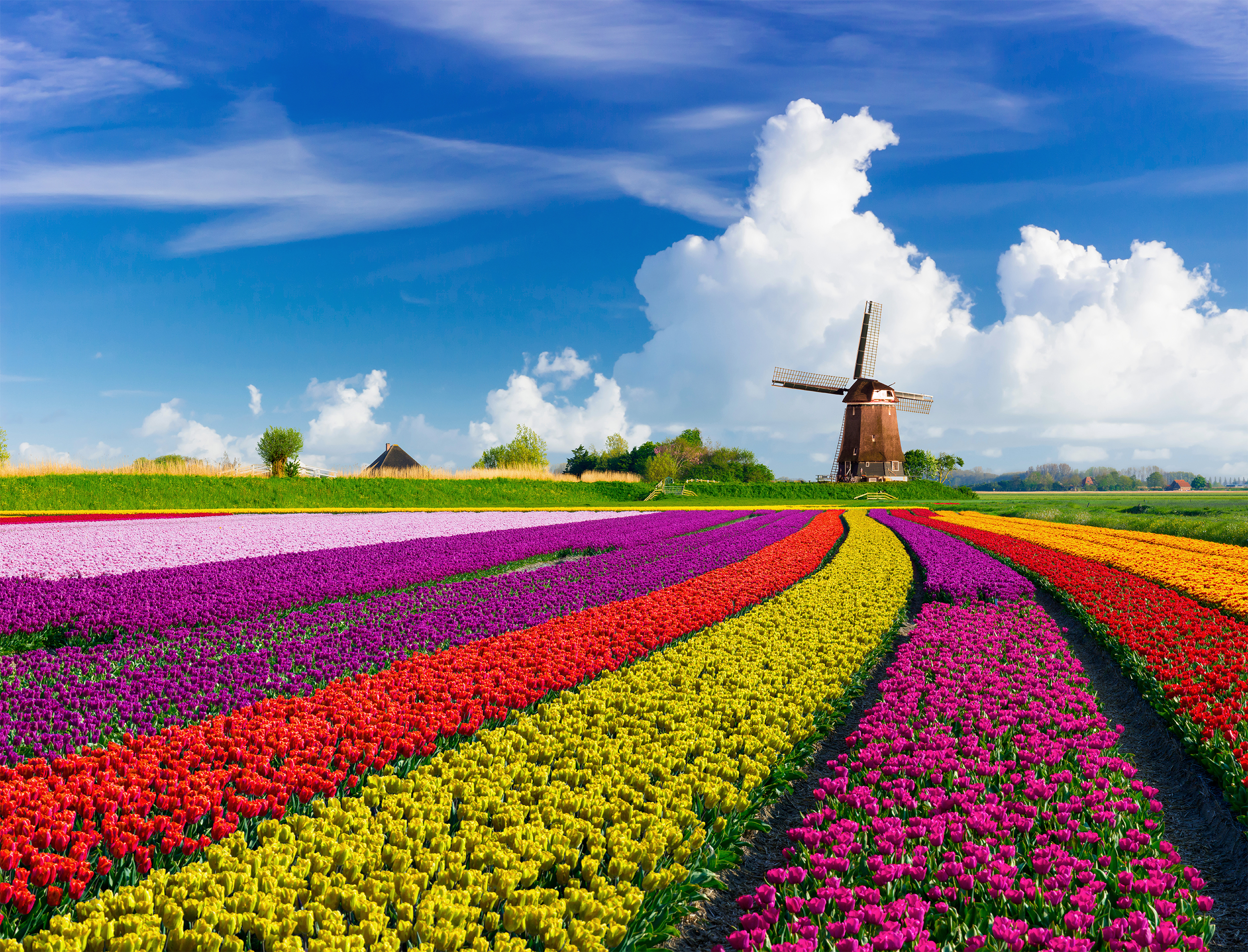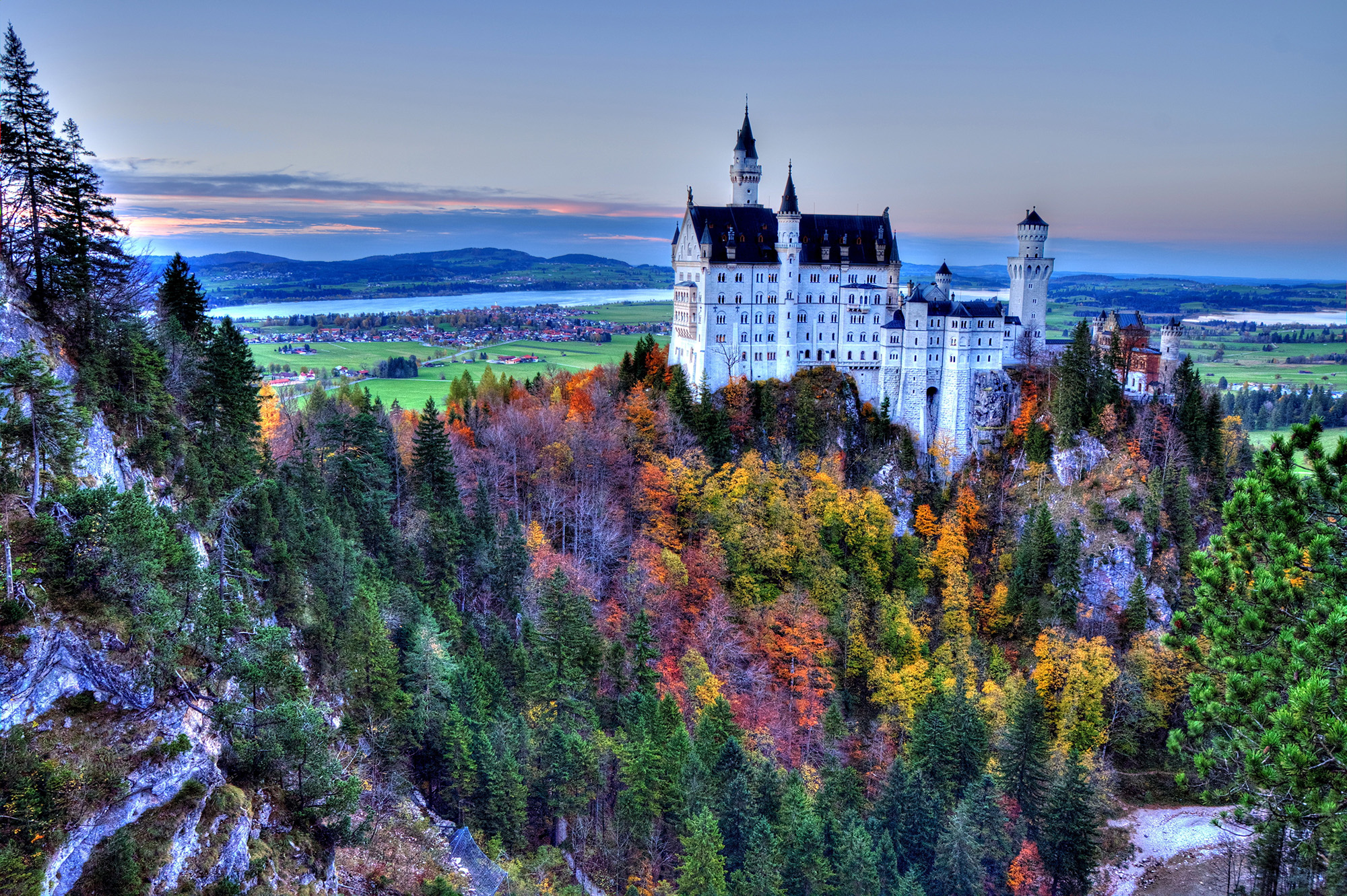The Best Time
To Visit Europe

Step one, decide to go on a tour of Europe. Step two, try to decide when the best time to go is. Step three, start planning...If you're past step one, you might be asking yourself right now, “Okay, so when actually is the best time for me to take a tour of Europe?” Plenty of considerations should go into determining the best time of year for you to visit, including seasonal weather, local events, and what you’re hoping to see while abroad.
When is the Best Time to Visit Europe?
First of all, let’s consider the seasons. Not winter, fall, summer, and spring, but peak, shoulder, and off seasons. The year is divided into these seasons in the travel world, and they make a huge difference in your experience.
For most travelers, the choice of which season to travel in falls along a spectrum of “I’ll go when it’s cheapest” to “I absolutely must travel in summer because that’s when it’s best.” Grand European’s Travel Specialists are happy to help you figure out the best time of year to visit the places you want to go and can explain how your experience might be different depending on the travel season.

Peak Travel Season in Europe
Summer is a fantastic time to explore Europe. The weather is warm, the sun is shining, and the outdoors are filled with festivals and things to do. It’s also the time of year when most people have vacations and are willing to travel. Such as, families with school-aged children who are pretty locked into traveling during the summer, so consider that when planning. While Peak Season sees the majority of people traveling, that doesn’t have to mean that you'll feel claustrophobic or have a less than custom experience. Our European vacation packages include plenty of culturally enriching encounters and insider experiences that connect you with locals and sites you'll visit.
Peak Season can be a hassle to plan for independent travelers. While nearly all destinations tend to have peak tourist season across July and August, this is not true of all European cities. Many independent travelers are surprised when they take a trip to Rome in August and find that temperatures are high and much of the city is shut down for a four-week holiday. So if you’re traveling independently and don’t want to travel to the coast, you’ll likely find a sparsely populated city center during these times and might have a hard time finding open shops or restaurants.
But you don’t need to worry about when you travel with us, because we handle all the details for you. If you’re wondering about the best time to visit your destination of choice, call us, and our Travel Specialists will be happy to answer your questions and offer expert advice you can trust. We can even offer you better Peak-Season rates than you would find on your thanks to pre-negotiated contracts with top hotels and local attractions.
Top 3 Ways to Enjoy Travel in Europe's Peak Seasons
Traveling during peak season means people. There are no two ways around it. Approach your vacation with the acceptance that there will be other people, likely many other people, traveling with you. Embrace the positive aspects, such as the likelihood of meeting different types of people and forming new friendships. And, perhaps most importantly, remember that traveling in a group on one of our guided tours gives you special access to Europe’s legendary sites. You can bypass the lines at world-renowned museums and legendary sites, and you’ll also enjoy guided visits with local experts.
- Try Something New On a tour, you’re a traveler, and you’ll go way beyond the guidebooks, like learning to shuck oysters on a seafood farm on the Croatian coast. Or sampling tapas alongside Sevillanos in Spain. Or join nonna in Alberobello, in Italy’s Apulia region, to learn the secrets of perfecting the perfect gnocchi. The more new things you try, the more you'll enjoy your destinations.
- Extend Your Stay Our European vacation packages include the perfect balance of guided sightseeing and free time to explore independently. Still, you might find that you didn’t get to spend as much time as you would have liked in a certain place. Consider adding a few extra nights at the end of your vacation, either to revisit a town you enjoyed during your trip or to explore a city that wasn’t included in your itinerary. If you’d like to spend additional time in a city included in the tour, your GET Travel Specialists will be happy to assist you and can book extra nights under our contracted hotel rates.
- Remember the Essentials Finally, wear comfortable walking shoes, and carry all the necessities for a day of sightseeing, such as sunscreen, maybe a hat, and always a reusable water bottle.

Off-Peak Travel & Holiday Seasons in Europe
Often the choice of budget seekers or return visitors, it’s no secret that largest perk of the Off Season is lower pricing. When fewer crowds are inclined to visit hotels and restaurants, major attractions tend to drop their prices. In addition to lower prices on your European vacation package, there are other benefits to choosing a tour during the Off-Seasons.
Sometimes, the most cultural experiences a country can offer fall outside peak travel season. Take the incredible European Christmas markets that flow across market squares with stalls, festivities, and seasonal treats galore. And you have the best chances of seeing the northern lights on a guided Iceland tour during the darkest winter months. Looking into various Off-Season attractions can open the doors to an incredible vacation.
How often do you behave like a tourist in your own hometown? Chances are you don’t regularly explore museums and attractions in-depth in the city where you live. Europeans are no different.
Top 3 Ways to Enjoy Travel in Europe's Off-Peak Seasons
When the crowds leave, the locals stay. This means you’ll mingle even more with locals when traveling in the Off-Season. This allows for a more immersive experience of what it is like to live in the country you’re traveling through.
- Explore With Locals Off-season travel means that many of the places you want to visit will be sparsely populated, and some may even be empty. This allows your experience to be intimate and very personal. Imagine visiting Europe’s renowned cultural sites with few other visitors—an experience made even richer with a local specialist to guide you and answer all your questions.
- Be Prepared Days are shorter, and the weather is less predictable during the Off-Seasons. This means you should plan for and be OK with rainy, cold, gray days and crisp, clear, cool ones. Be sure to bring the right essentials for your trips, such as comfortable walking shoes and a raincoat. For helpful ideas on what to pack, take a look at our packing list.
- Know That Off-Peak Offers a Different View In Vienna, the famed Boys’ Choir and Lipizzaner Stallions are best observed in the off-peak season. And you have the best chance of seeing the northern lights on a guided Iceland tour during the darkest winter months. Looking into various off-peak season attractions can open the doors to an incredible vacation.
Spring & Fall Travel Shoulder Seasons in Europe
Traveling during the shoulder season—those quieter months between peak and off-peak times—offers a strategic blend of value, comfort, and authenticity. Savvy travelers know this is when destinations are less crowded, prices on flights drop, and the local pace returns to normal. With milder weather and more availability, it’s the ideal window to explore popular locations without the stress of high-season crowds. Whether you're enjoying spring blooms in the Netherlands' tulip fields or exploring the golden vineyards of France’s Loire Valley, shoulder season travel delivers exceptional experiences with fewer trade-offs.

Spring Shoulder Season Travel
Seen by many experts as the “sweet spot” for European travel, the Spring Shoulder Season offers plenty of sunlight, comfortable temperatures, fewer crowds, and a tourism industry eager to please the remaining tourists they see for the season. April through June, most cities are lovely and full of blooms, including the famous Spring Tulip festivals in the Netherlands.

Fall Shoulder Season Travel
Fall months are always full of amazing experiences, no matter the destination. From chasing fall foliage in the Scottish Highlands to savoring the wine festivals of Germany, autumn is truly one of our favorite seasons for travel. When that first crisp day arrives, thoughts of apples, bonfires, and cozy sweaters float on Autumn breezes. Celebrate the changing of seasons in any one of our top spots for fall colors, and enjoy an autumn adventure you won’t soon forget.
Top 3 Ways to Enjoy Travel in Europe's Shoulder Seasons
Europe’s shoulder seasons—spring and fall—present a golden opportunity for travelers seeking a richer, more relaxed experience. Here are three standout ways to make the most of these quieter, more affordable times to explore the continent.
- Benefit from Better Deals Fall and spring often offer lower prices on flights, accommodations, and tours, making shoulder seasons a cost-effective time to travel. These seasons allow you to stretch your budget further and splurge on extraordinary experiences. Additionally, many local festivals and events take place during these times, allowing you to experience authentic cultural celebrations and traditions without the high costs and crowded conditions of peak season.
- Indulge in a Quieter Experience Traveling during the shoulder seasons means fewer tourists compared to the bustling summer months. This translates to a more relaxed and enjoyable experience at popular sites and attractions. You'll spend less time waiting in lines and more time immersing yourself in the culture and history of your destinations. Whether you're exploring the streets of Paris, visiting Rome's ancient ruins, or enjoying a scenic drive through the countryside, you'll savor the tranquility of the quieter ambiance.
- Relish Milder Weather The shoulder seasons of fall and spring offer some of the best weather for exploring Europe. Milder temperatures make it comfortable to walk around cities, hike scenic trails, and visit outdoor attractions without the extreme heat of summer or the cold of winter. In spring, witness blooming flowers and lush greenery, while fall brings beautiful foliage and a pleasant, crisp atmosphere.
Frequently Asked Questions About the Best Time to Visit Europe
Off-peak season—early November through mid-to-late March—is typically the cheapest time to fly to Europe. Without intermittent fare spikes, it's usually cheaper to fly to Europe mid-week, especially on Tuesdays and Wednesdays.
Northern and Western Europe (the UK, Ireland, the Netherlands, Germany, and France) tends to experience the most rainfall in late autumn through winter
Southern Europe (Italy, Spain, Portugal, and Greece) has a more Mediterranean climate where the rainy season typically lasts from October to November
Eastern and Central Europe (Poland, Hungary, and the Czech Republic) experiences rainfall that is more evenly spread throughout the year
Some travelers think Europe is best in the warm summer months when the weather is enjoyable, the sky is beautiful, and the air is refreshing. However, this also means higher travel expenses and larger crowds of people. Fall travel in Europe means more festivals. Spring travel through Europe means blooming gardens and sparser crowds. Winter travel in Europe offers travelers the chance to visit the magical Christmas Markets held in town squares of most European countries.
We recommend you start to plan your trip to Europe between 3 -10 months before you want to travel. Airlines don’t publish fares much further out than 10-11 months. You should look to book your vacation once you can lock in your flights. Luckily, we take care of all of that for you. If travelers want to go for a special anniversary or event, they’ll book years in advance so they know they’re set and can let us handle it from there.
It’s important to make sure your passport is valid for at least six months after you’re planning to return to the states. Planning earlier allows you plenty of time to renew your passport if needed.











